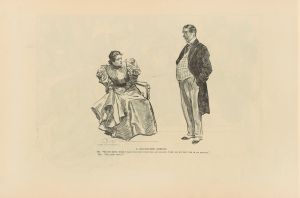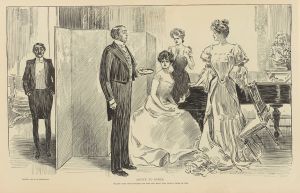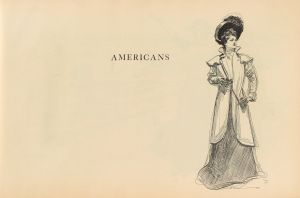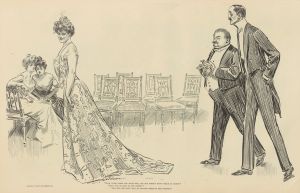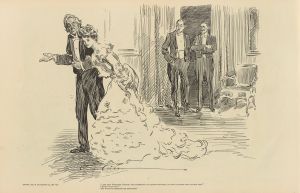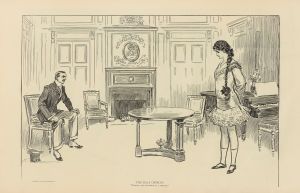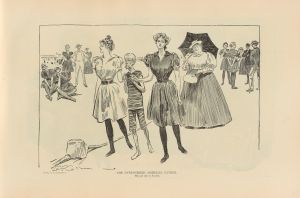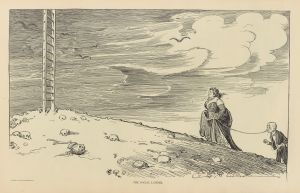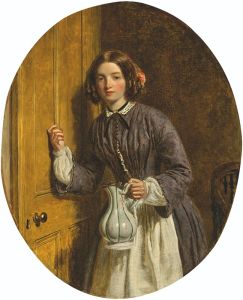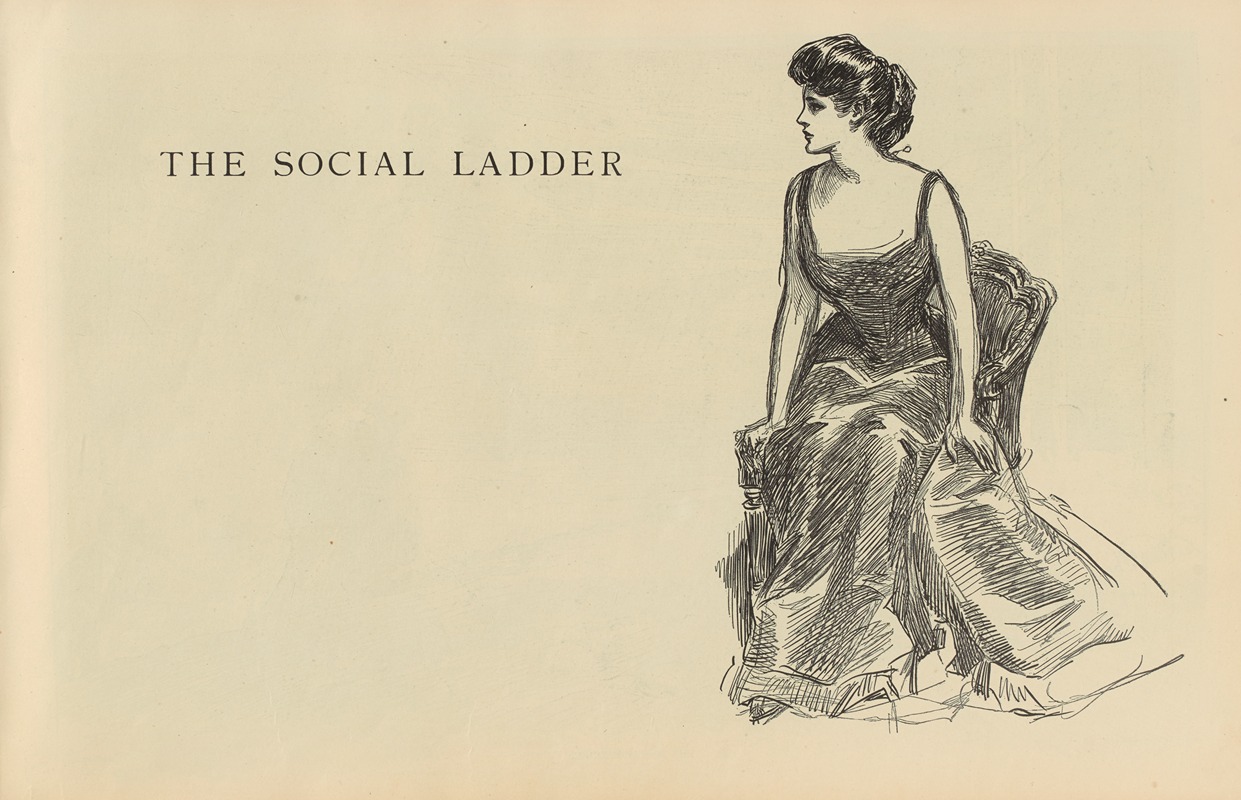
The social ladder
A hand-painted replica of Charles Dana Gibson’s masterpiece The social ladder, meticulously crafted by professional artists to capture the true essence of the original. Each piece is created with museum-quality canvas and rare mineral pigments, carefully painted by experienced artists with delicate brushstrokes and rich, layered colors to perfectly recreate the texture of the original artwork. Unlike machine-printed reproductions, this hand-painted version brings the painting to life, infused with the artist’s emotions and skill in every stroke. Whether for personal collection or home decoration, it instantly elevates the artistic atmosphere of any space.
Charles Dana Gibson was an influential American illustrator best known for his creation of the "Gibson Girl," an iconic representation of the idealized American woman at the turn of the 20th century. Among his numerous works, "The Social Ladder" stands out as a significant piece that captures the essence of social dynamics during the Gilded Age.
"The Social Ladder" is a black-and-white illustration that reflects Gibson's keen observation of society and his ability to convey complex social themes through art. Created in the early 20th century, this illustration is part of Gibson's broader commentary on the social structures and class distinctions prevalent in American society during that era. The Gilded Age, a period marked by rapid economic growth and stark social contrasts, provides the backdrop for this work.
In "The Social Ladder," Gibson employs his characteristic pen-and-ink style to depict a scene that is both satirical and insightful. The illustration features a series of figures ascending a metaphorical ladder, each representing different social classes and aspirations. The characters are meticulously drawn, showcasing Gibson's attention to detail and his ability to capture the nuances of human expression and posture.
The composition of the illustration is carefully structured to guide the viewer's eye from the bottom to the top of the ladder. At the lower rungs, individuals are depicted in more humble attire, suggesting their lower social standing. As the eye moves upward, the figures become more elegantly dressed, symbolizing their ascent in social status. This progression not only highlights the aspirations of individuals to climb the social hierarchy but also subtly critiques the societal emphasis on status and appearance.
Gibson's work often included elements of humor and irony, and "The Social Ladder" is no exception. The exaggerated features and poses of the characters serve to underscore the absurdity of the social climbing phenomenon. By presenting a visual narrative that is both engaging and thought-provoking, Gibson invites viewers to reflect on the values and priorities of their own society.
"The Social Ladder" is emblematic of Gibson's broader body of work, which often explored themes of gender, class, and social mobility. His illustrations were widely published in magazines such as Life, Harper's Weekly, and Scribner's, reaching a broad audience and influencing public perceptions of social issues.
Charles Dana Gibson's legacy as an illustrator is significant, and "The Social Ladder" remains an important example of his ability to capture the spirit of his time. Through his art, Gibson not only entertained but also challenged viewers to consider the complexities of social structures and the human desire for upward mobility. His work continues to be studied and appreciated for its artistic merit and its insightful commentary on American society during a transformative period in history.





